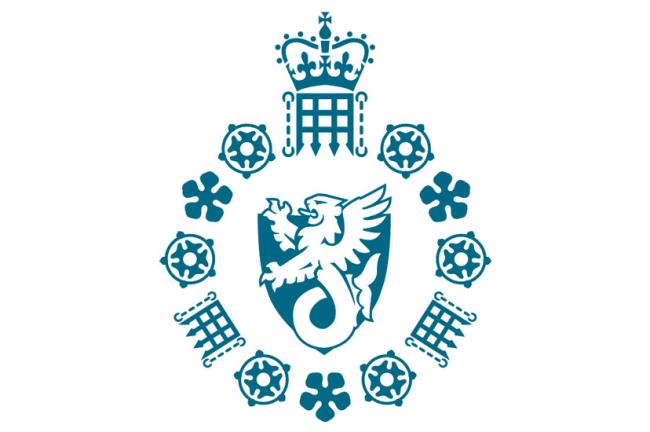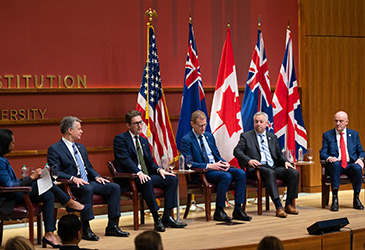Gender pay gap report 2022
Foreword from the director general
It is essential to MI5’s mission to keep the country safe that we recruit a diverse set of brilliant people and help them be outstanding intelligence officers.
MI5 has made progress in harnessing and growing the talents of people from many different backgrounds and with a huge range of skills and experiences. Over the past year we can point to a number of different areas where we have made progress: our gender pay gap reduced by 2.4 percentage points; we increased representation of women towards the top of our organisation; and nearly 54% of new joiners to MI5 in the 2021/22 financial year were women.
But we know there is more to do. The initiatives in place to improve female representation at all levels, some led by our fantastic gender staff network, have already started to drive positive change. We need to maintain momentum to deliver sustained, long-term results.
The next steps outlined in this report have my full support, and I’m determined that MI5 keeps improving when it comes to equality, diversity and inclusion. This is the right thing to do. By attracting and supporting the talent, expertise and perspectives we know we need, we will maintain our edge in detecting and disrupting threats to the UK’s national security.
MI5 director general, Ken McCallum
Ordinary gender pay gap
Mean ordinary pay gap - 11.4%
2021: 12.5%
Median pay for men is 16.2% higher
2021: 18.6%
Based on data taken on 31 March 2022, MI5’s median pay for men is 16.2% higher than for women. This is an improvement from 2021. The mean ordinary pay gap has also improved slightly to 11.4%.
An increase of female representation in the upper (highest paid) quartile (34.3% in 2022, compared to 31.7% in 2021) is likely to be one of the driving factors behind our reduced pay gap.
Pay quartiles
Upper pay quartile
34.4% women, 65.6% men
Upper middle pay quartile
41.7% women, 58.3% men
Lower middle pay quartile
48.5% women, 51.5% men
Lower pay quartile
63.3% women, 36.7% men
As of 31 March 2022, our employee workforce comprises 47% women, up slightly from 46.6% in 2021.
We are bringing more women into MI5 than ever before, with women making up 53.8% of new joiners to the organisation during the 2021/22 financial year, on an upward trajectory.
However, women remain significantly over-represented in the lower pay quartiles, and although we have seen improvements, are still under-represented in the upper pay quartiles. Continuing to increase female representation at the highest levels, through a combination of recruitment and progression, will help us maintain momentum and continue on our broadly positive trajectory.
Bonus gender pay gap
32.6% of female employees received a bonus
29.7% of male employees received a bonus
A refreshed reward scheme was launched in 2021/22, with a focus on rewarding outstanding performance by a more diverse range of staff.
As a result, our median gender bonus pay gap is 0%, with 32.6% of women receiving bonuses compared to 29.7% of men. Now the new scheme has been fully embedded, we intend to continue to monitor its impact on equality, diversity and inclusion in the organisation.
No comparison is available with 2021, as in 2020/21 we took a different approach.
Progress in 2022
2022 saw the launch and progression of a number of initiatives which, among other objectives, are intended to reduce MI5’s gender pay gap:
- Women In Technology: This is a new initiative to encourage, support and champion women in MI5 who are interested in pursuing a career, or already working, in technology and science-related roles.
- Mentoring: We have launched a new mentoring programme for women and non-binary staff in the grades making up the lowest pay quartiles. The objective of this programme is to maximise career progression by addressing the bespoke objectives of mentees. This includes their career aspirations, building their visibility in the organisation and growing their professional network. So far, over 80 mentor-mentee pairings have been made.
- Transparency: We have sought to increase awareness and understanding of our gender pay gap this year, through the publication of a dedicated intranet site that collates resources, blogs and answers to frequently asked questions for our colleagues.
Next steps in 2023
We’re committed to closing our gender pay gap and have an ambitious strategy for 2023, with a focus on four areas:
- We will focus the additional resource secured in the last year on maximising the diversity of the candidates we recruit. We will continue to broaden our pool of senior hire applicants.
- We will develop and deploy a formal sponsorship programme for senior women. We will review our HR processes to identify and remedy any potential blockers for women.
- We will celebrate International Women’s Day and other important milestones. We will promote a culture of challenge.
- We will work to achieve and measure tangible process on inclusion, including a continued focus on gender. We will continue to improve our ability to make data-driven policy decisions on equality, diversity and inclusion.
Glossary
Mean and median
The mean is the sum of all the numbers in the set, divided by the number of numbers in the set. The mean can be skewed by a small number of larger salaries in an organisation.
The median is the middle point of a number set (when arranged in number order) in which half the numbers are above the median and half are below. The median represents distribution of women throughout the salary bands of an organisation, and is the metric used by the ONS to describe the UK’s gender pay gap.
Pay gap and equal pay
The gender pay gap is different to equal pay. The gender pay gap is the difference in average hourly earnings between all women and all men across an organisation. It is based on hourly rates paid directly to employees before tax and national insurance contributions are deducted. If, for example, women do more of the lower paid jobs within an organisation than men, the gender pay gap is usually bigger. Equal pay is the difference in pay for men and women who carry out the same or similar job or work of equal value. Since 1970 it has been unlawful to pay people unequally because they are a man or woman.
Ordinary pay
Ordinary pay includes basic pay, allowances, pay for piecework, pay for leave and shift premium pay. (Ordinary pay does not include overtime pay; allowances earned during paid overtime hours; redundancy pay; pay related to termination of employment; pay in lieu of annual leave; any repayments of authorised expenses; benefits in kind; interest-free loans)
Pay quartiles
Quartiles are values that divide data into quarters. When the pay data is organised sequentially, it is then divided into quarters: the lowest 25% of numbers (lower quartile); the next lowest 25% of numbers, up to the median (lower middle quartile); the second highest 25% of numbers, above the median (upper middle quartile); and the highest 25% of numbers (upper quartile). Pay quartiles are calculated by hourly pay rates rather than organisation-specific pay bands or grades.
Hourly pay
The gender pay gap is based on hourly pay excluding overtime. This enables employers to consider the gender pay gap across the workforce as a whole. Hourly pay is the sum of ordinary pay and additional allowances that were paid in the pay period which ends on the snapshot date (31 March 2021). This means part-time workers are measured like-for-like on hourly pay against full-time workers.

